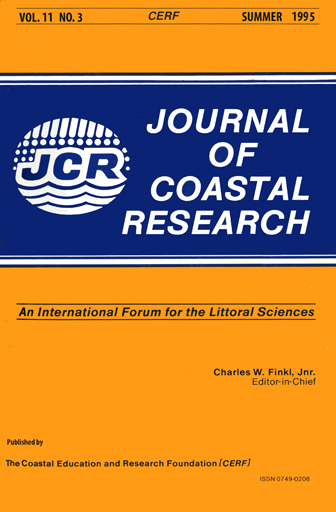Drainage Displacement by Sea-Level Fluctuation at the Outer Margin of the Chesapeake Seaway
Keywords:
Paleochannels, Quaternary stratigraphy, seismic stratigraphy, Chesapeake Bay, Susquehanna River, channel migration.Abstract
The trace of the ancestral Susquehanna River across the modern coastline has been displaced over 40 km southward since the middle Pleistocene. High-resolution seismic reflection data from the inner shelf suggest that submerged-channel fill is responsible for at least three time-lagged channel shifting events during regressive parts of Pleistocene eustatic cycles.Traditional models for tidal-inlet shift are dependent on migrating spit platforms that progressively fill a portion of the updrift side of a channel and directly force excavation of an equivalent portion of material from the downdrift side. Channel migration results in a continuous broad channel-scar representing the integrated positions of channels at time scales of 100 to 102 years.
Seismic data adjacent to the southern Delmarva Peninsula illustrate four separate Pleistocene lowstand pathways for the ancestral Susquehanna River. Although regional spits have migrated between these pathways, there is no evidence of continuous channel migration between the channel traces. The mechanism for channel shifting was glacio-eustatically controlled, and occurred at time intervals of 105 years. Channel shifting was operative during early regression when fluvial channels were not confined to their previous antecedent lowstand channels and jumped laterally to new locations.
Time-lagged channel shifts are indirectly forced by spit growth during major highstand events and widespread regional flooding. During these events, the ancestral Susquehanna River was no longer confined to its fluvial valley but spread into broad ancestral Chesapeake Bays formed in the drowned Chesapeake Basin. Estuarine sediments, migrating spit platforms, and bay-entrance shoals filled the drowned fluvial channels in the seaward parts of the ancestral bays. During subsequent regressions, the bays shrunk and the flow of the ancestral Susquehanna River jumped to adjacent tidal-flushed pathways and subsequently drained to the shelf edge.
During late Pliocene and early Pleistocene Iowstands, at least six major rivers drained across the Chesapeake Basin. Time-lagged channel shifts and stream captures have progressively reduced the number of drainways leaving the basin. During the most recent Stage 2 lowstand, only two or possibly three drainways may have crossed the entrance of the Chesapeake Basin.


